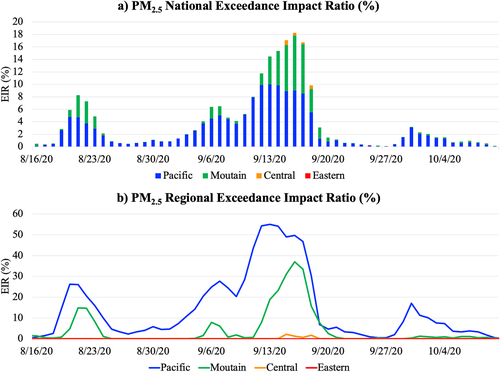ARL Weekly News – October 29, 2021
| Upcoming Events |
COP26 Panel on Atmospheric Deposition
Ariel Stein will moderate a WMO panel on Saturday, November 6 during COP26, on Atmospheric Deposition: the Invisible Threat – Impacts on Agriculture, Ecosystems and Oceans. This session will be hosted within the IPCC-WMO-UKMO Pavilion. Wet and dry deposition of atmospheric pollutants can have detrimental impacts on sensitive ecosystems, rivers, lakes and oceans and can also reduce crop yields. The international community is developing tools to provide globally consistent maps of ozone, sulphur and nitrogen deposition for evaluating the risks to agriculture and ecosystems. The concept of global system, deposition impacts and implications for the ocean management will be presented.
Date: Sat, Nov 6 2021 (2PM – 3PM, EDT) or Nov 6 – (18:00 – 19:00 UTC). Livestream: https://www.youtube.com/watch?v=FGdMPqAGGb4
Speakers:
- Lisa Emberson (UK): Impact of ground level ozone pollution on future of food security
- Thomas Dirnböck (Austria): Impacts of deposition on land ecosystems and biodiversity
- David Vousden (South Africa): Deposition and ocean management
- Amanda Cole (Canada): Measurement Model Fusion for Global Total Atmospheric Composition: the value of the global deposition maps
| Previous Events |
2021 NOAA Administrator Awards Recognize ARL Efforts in Atmospheric Research
Several ARL projects and accomplishments were recognized in the NOAA Administrator’s awards during a ceremony on October 27, 2021, including two bronze medals. The highest honor award granted by the NOAA Administrator, the Department of Commerce Bronze Medal recognizes federal employees for superior performance and is awarded to individuals, groups (or teams), and organizations.
One team recognized included ARL’s Rick Saylor for Scientific or Engineering Achievement. The award was presented to the GEFS-Aerosols effort to integrate weather and air quality forecasts to generate week long forecasts of aerosol components such as dust, wildfire smoke, carbon, and volcanic ash. The model was incorporated into service by the National Weather Service on September 20, 2020 following a five year effort between NOAA’s Oceanic and Atmospheric Research (OAR) and the National Weather Service.
Also receiving a bronze medal was a group including Ariel Stein, Acting Director of ARL, for Organizational Development. He was one of several leaders across OAR and NESDIS that coordinated the unique research opportunity that pandemic lockdowns offered to study our environment. The team prioritized research to explore the relationship between various levels of human activity and their environmental impact.
| Publications |
Papers Published
Li, Y., Tong, D., Ma, S., Zhang, X., Kondragunta, S., Li, F., & Saylor, R. (2021). Dominance of wildfires impact on air quality exceedances during the 2020 record-breaking wildfire season in the United States. Geophysical Research Letters, 48, e2021GL094908. https://doi.org/10.1029/2021GL094908
Abstract: The western United States experienced a record-breaking wildfire season in 2020. This study quantifies the contribution of wildfire emissions to the exceedances of health-based National Ambient Air Quality Standard (NAAQS) for fine particles (PM2.5) by comparing two CMAQ simulations, with and without wildfire emissions. During August to October 2020, western wildfires contributed 23% of surface PM2.5 in the contiguous US (CONUS), with a larger contribution in Pacific Coast (43%) and Mountain Region (42%). Consequently, wildfires were the primary contributor to the 3,720 observed exceedances. The wildfire influence peaked on September 14th, 2020, when 273 exceedances were recorded and wildfire emissions contributed 41%, 81%, and 72% to surface PM2.5 concentrations in the CONUS, Pacific Coast, and Mountain Region, respectively. Our finding highlights the predominating influence of wildfires on air quality, and potentially human health, that is expected to grow with increasing fire activities, while anthropogenic emissions decrease.

Figure 4 from LI, et al: National (a) and Regional (b) wildfire PM2.5 Exceedance Impact Ratio (%).

